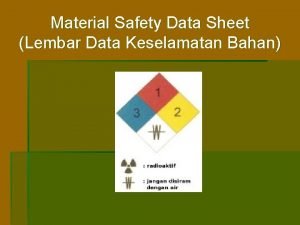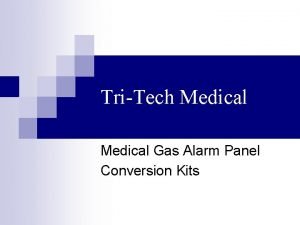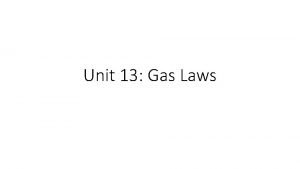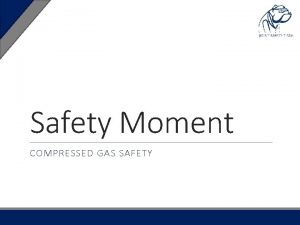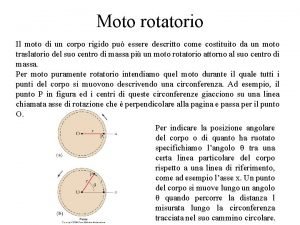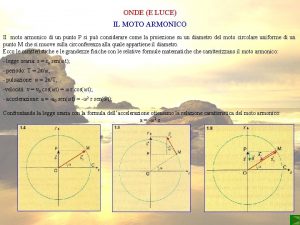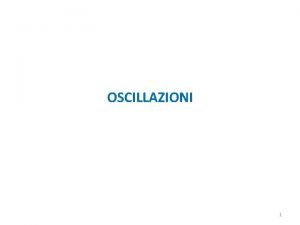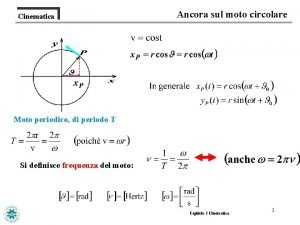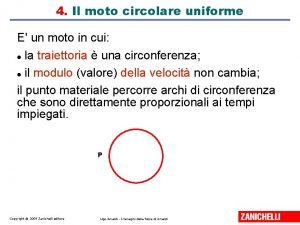Safety Data Sheet Review Moto Master Gas Line














- Slides: 14

Safety Data Sheet Review Moto. Master Gas Line Antifreeze Part # - 038 -2331

Hazard Identification DANGER Product is a highly flammable liquid and vapour. Toxic if inhaled, swallowed or in contact with skin. Causes damage to organs (eyes) if swallowed. Keep away from heat, sparks, open flames and hot surfaces. No smoking. Keep container tightly closed. Ground/bond container and receiving equipment. Use explosion-proof electrical, ventilating, lighting and other equipment. Use only non-sparking tools. Take precautionary measures against static discharge. Do not breathe fume, mist, vapour and spray. Wash hands and skin thoroughly after handling. Do not eat, drink or smoke when using this product. Use only outdoors or in a well ventilated area. Wear protective gloves and clothing.

Toxicological Information Likely routes of exposure: Ingestion, Inhalation, Skin contact & Eye contact Ingestion: Toxic, can cause death, depression of the central nervous system, impaired vision and blindness. In some cases, there may be delayed effects on the nervous system. Symptoms may include headache, nausea, vomiting, dizziness, drowsiness and confusion. A severe exposure may cause stomach pain, muscle pain, difficult breathing and coma. Vision can be impaired and permanent blindness can result. There may be other permanent effects on the nervous system such as tremors and/or seizures. Skin Absorption: Harmful based on human experience. Can cause effects as described for inhalation. Depression of the central nervous system occurs. Symptoms may include headache, nausea, dizziness, drowsiness and confusion. A severe exposure can cause unconsciousness.

Toxicological Information Inhalation: May be harmful based on human experience and animal testing. Depression of the central nervous system occurs. Symptoms may include headache, nausea, dizziness, drowsiness and confusion. A severe exposure can cause unconsciousness. At high concentrations it can cause death based on human experience. Repeated exposure may cause damage to the central nervous system. Symptoms may include restlessness, reduced ability to think, muscle tremors, memory loss and personality changes. At high concentrations, inhalation may cause harmful effects on the liver, visual disturbances, cataracts and opacities. Skin Corrosion/Irritation: Human experience shows very mild irritation. Repeated exposures may cause dermatitis. Symptoms may include dry, red, cracked skin. Serious Eye Damage/Irritation: Animal tests show serious eye irritation. Aspiration Hazard: Not known to be an aspiration hazard.

Toxicological Information Carcinogenicity: No information was located. Reproductive Toxicity: Regarding development of offspring, animal studies show effects occur. If inhaled, effects are known to cause decrease weight, birth defects, teratogenic (external, soft tissue and skeletal defects) and embryotoxic (late resorptions). Sexual Function and Fertility: Not known to cause effects on sexual function or fertility. Effects on or via Lactation: May cause effects on or via lactation. Can transfer to mother’s milk. Germ Cell Mutagenicity: Conclusions cannot be drawn from the limited studies available. Interactive Effects: No information was located.

Exposure Control/Personal Protection Engineering Controls: General ventilation is usually adequate. For large scale use of this product, do not allow product to accumulate in the air in work or storage areas, or in confined spaces. Use local exhaust ventilation, if general ventilation is not adequate to control amount in the air. Use non-sparking ventilation systems, approved explosion-proof equipment and intrinsically safe electrical systems in the areas where this product is used and stored. Control static electricity discharges which include bonding of equipment to ground. Use only non-combustible, compatible materials for walls, floors, ventilation system, air cleaning devices, pallets and shelving. Provide safety shower in work area, if contact or splash hazard exists.

Exposure Control/Personal Protection Respiratory Protection: Not normally required if product is used as directed. For non-routine or emergency situations, wear a NIOSH approved air-purifying respirator with an organic vapour cartridge. Eye/Face Protection: Wear chemical safety goggles. Skin Protection: Wear chemical protective clothing such as nitrile rubber gloves, aprons and boots.

First Aid Measures Target Organs Eyes, liver and nervous system. Medical Conditions Aggravated by Exposure Respiratory condition, dermatitis and eye conditions. Most Important Symptoms and Effects, Acute and Delayed No specific treatment. Treat symptomatically. Contact poison treatment specialist immediately if large quantities have been ingested or inhaled.

First Aid Measures Inhalation Take precautions to ensure your own safety before attempting rescue. Remove source of exposure or move victim to fresh air. Keep victim at rest in a position comfortable for breathing. If breathing has stopped, trained personnel should begin rescue breathing. If the heart has stopped, trained personnel should start cardiopulmonary resuscitation (CPR) or automated external defibrillation (AED). Avoid mouthto-mouth contact by using a barrier device. Get medical advice/attention if you feel unwell or are concerned.

First Aid Measures Ingestion Rinse mouth with water. Never give anything by mouth if victim is rapidly losing consciousness, is unconscious or convulsing. “DO NOT INDUCE VOMITING”. If vomiting occurs naturally, lie on your side in the recovery position. Rinse mouth with water again. If breathing has stopped, trained personnel should immediately begin rescue breathing. If the heart has stopped, trained personnel should start cardiopulmonary resuscitation (CPR) or automated external defibrillation (AED). Avoid mouth-tomouth contact by using a barrier device. Immediately call a Poison Centre or Doctor. Treatment is urgently required.

First Aid Measures Skin Contact Avoid direct contact. Wear chemical protective clothing if necessary. Take off contaminated clothing, shoes and leather goods (e. g. watchbands, belts) immediately. Wash gently and thoroughly with lukewarm, gently flowing water and mild soap for 5 minutes. Get medical advice/attention if you feel unwell or are concerned. Thoroughly clean clothing, shoes and leather goods before reuse or dispose of safely.

First Aid Measures Eye Contact Avoid direct contact. Wear chemical protective goggles if necessary. Immediately rinse the contaminated eye(s) with lukewarm, gently flowing water for at least 30 minutes, while holding the eyelid(s) open. If eye irritation persists, get medical advice/attention.

Disposal Considerations For proper disposal of this product, please refer to the complete Safety Data Sheet located on your computer network or the Safety Data Sheet binder/s in your facility.

For Further Information If additional information is required about this product, please refer to the complete Safety Data Sheet located on your computer network or the Safety Data Sheet binder/s in your facility. Please remember to sign the companies staff record sheet confirming that you reviewed this power point presentation.
 Moto moto
Moto moto Contoh material safety data sheet
Contoh material safety data sheet Adjustable cross staff in surveying
Adjustable cross staff in surveying Mmsb usmc
Mmsb usmc Class iii prescription balance
Class iii prescription balance Chemetron medical gas alarm panel
Chemetron medical gas alarm panel Stock verification process
Stock verification process Jacques charles' law
Jacques charles' law Ideal gas vs perfect gas
Ideal gas vs perfect gas Imaginary gas
Imaginary gas Gas law
Gas law Sutherland's law
Sutherland's law Gas leaked in bhopal gas tragedy
Gas leaked in bhopal gas tragedy Gas leaked in bhopal gas tragedy
Gas leaked in bhopal gas tragedy Volume molare
Volume molare

